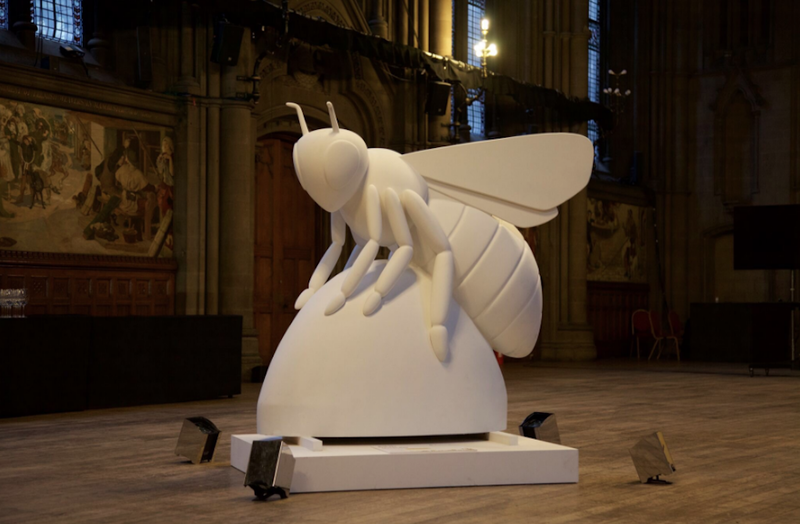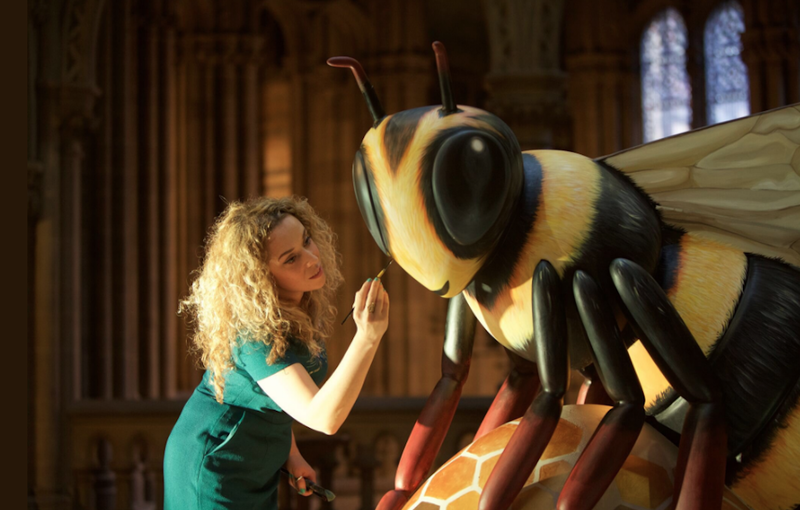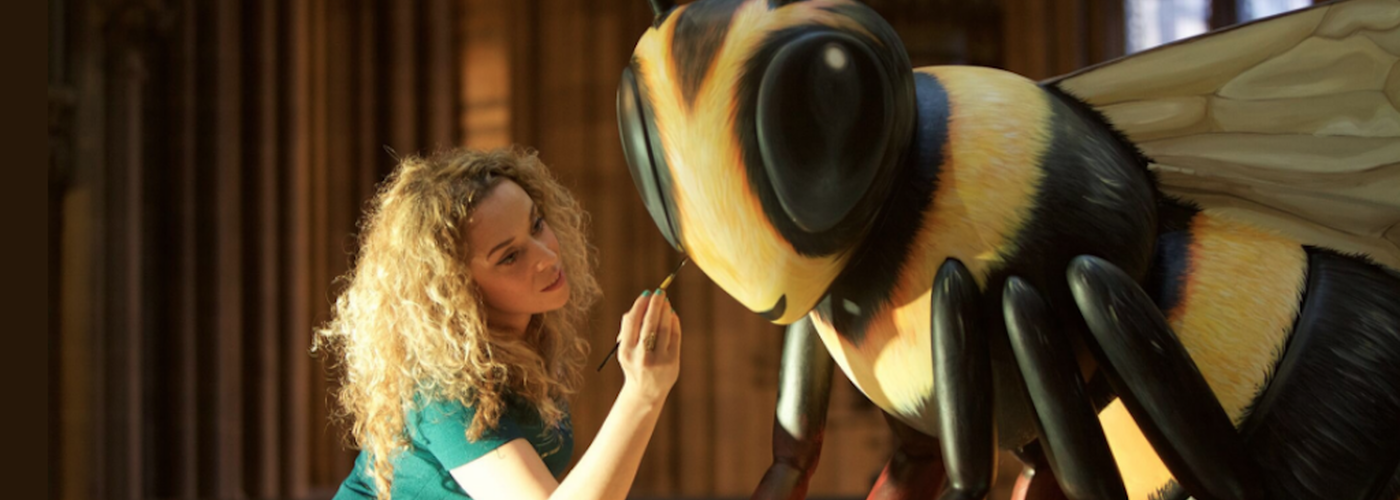A swarm of supersized honeybees will descend on the city next summer for one of the city’s biggest public art exhibitions
It’s been part of Manchester’s heraldry for over 150 years - a symbol of its industrious spirit - but the tragic events of May saw the honeybee again thrown into public consciousness, as the city united in solidarity.
Thousands of Mancunians queued for fundraising bee tattoos, bee-themed street art colonised walls citywide and many charitable events took the bee as their symbol. Now, bees at Jury’s Inn have their own hotel, The Printworks’ are up for ‘adoption’ and honey dishes and drinks abound. From tomorrow, you can even buy bee-themed Christmas cards from the Central Library: 25% of profits will go towards fighting homelessness.
However, perhaps the most ambitious bee project is yet to come - as, next summer, over 80 supersized sculptures wing their way to Manchester for one of the biggest public art exhibitions the city has ever seen.
The Bee in the City trail comes courtesy of Wild in Art: a leading global producer of public art events. With a focus on connecting communities through the power of creativity, previous WIA events span Australia and São Paulo to the London Olympics and the Manchester BookBenches.

So, how will it work? Artists - whether emerging or established - are invited to submit bee designs, while local businesses are encouraged to sponsor a sculpture and choose their favourite design. For the local business sector, there are also opportunities to be the trail’s main sponsor and/or support the learning and community programmes.
The Bee in the City trail will be on display throughout the city for nine weeks from July to September 2018, weaving its way through both popular landmarks and less explored areas. Meanwhile, an inclusive learning programme, imaginatively linked to the curriculum, will give over 30,000 school children the chance to explore everything Manchester through creative eyes.
Local community groups will also be invited to work with artists on their own special contribution to the trail - which is expected to attract over a million visitors, generate an estimated £20m for Manchester’s economy and raise around £300k for local charitable causes.
After the trail, all bees will be auctioned to raise funds for the Lord Mayor’s We Love MCR Charity, which works to improve the lives of Manchester people through community grants and initiatives.

Sir Richard Leese CBE, Leader of Manchester City Council, said: "The bee symbolises the industrious, creative and energetic spirit of Manchester and its people. Bee in the City will build on Manchester's reputation for innovation and the role that culture plays at the heart of city life. This accessible event will encourage Mancunians and visitors alike to explore the bee trail next summer. It's sure to be a memorable and enjoyable spectacle and the council is pleased to be backing this special event."
Leese helped to launch the project last night during a ceremony at the Town Hall: another testament to civic pride, itself scattered with bees, from the coats of arms rendered in stone to the mosaic flooring. He was joined in speeches by Mike Blackburn OBE (North West BT regional director and GM LEP chairman), Lord Mayor Eddy Newman and Wild in Art co-director Charlie Langhorne, who - aside from making plenty of bee puns - talked about the value of art to health and wellbeing: 79% of those surveyed, for instance, said that art trails get them out walking.

Perhaps the most touching story, however, concerned a previous Wild in Art trail called Snow Dogs - based in and around Newcastle - which unwittingly affected the life of a recluse. A series of traumatic events had led him to remain housebound for eight years but, when a Snow Dog was placed near his house, he was compelled to go out and see it. Venturing ever further, he eventually saw all the Snow Dogs (no easy feat considering they were scattered throughout Tyne and Wear) and is now on the road to recovery.
While the Snow Dog stats are undoubtedly impressive - 676K visitors, £16.5m brought to the region, £367K for charity - it’s tales like these that truly highlight the power of art to inspire and bring us together.
Sally-Ann Wilkinson, co-director of Wild in Art, said: "Bee in the City will become Manchester's buzzword, attracting many new partnerships and collaborations to create a very special event. It promises to connect, inspire, and bring huge benefit and enjoyment to all communities through the power of our city's creativity."
Any organisations interested in sponsoring the event should contact Julie Gaskell, Head of Partnerships at Wild in Art: julie@wildinart.co.uk - a full sponsorship pack can be found on at beeinthecitymcr.co.uk @beeinthecitymcr.
Did you know...?
- Honeybees are social insects and live in colonies with a ‘social hierarchy:’ including a queen, drones and workers
- Honeybees have been producing honey for over 100 million years. They are so industrious they produce much more than they can eat - good news for us…
- In their short lives, the workers genuinely are busy bees and have many jobs: they feed the queen and larvae, guard the hive entrance and maintain a cool environment in the hive by fanning their wings. They even shape the honeycomb in which the queen’s eggs are laid
- Honeybees flap their wings around 11,400 times per minute - thus producing their distinctive humming noise
- Worker bees are all females. They are the smallest bees and there can be up to 60,000 of them in a single colony. They are not developed for mating: only the queen mates, with the male drones
- Larvae are fed with royal jelly (produced by worker bees), later switching to honey and pollen. One lucky larva is fed solely on royal jelly and she will develop into a queen bee
- Bees only sting if provoked and workers sting intruders as a form of defence
- The workers have career progression! They initially only work inside the hive, eventually becoming foragers out in the wild
- Unfortunately, bee colonies are rapidly declining. As a key effect of bees collecting nectar to make honey is pollination - important for flowering plants - it’s a problem we need to address
















